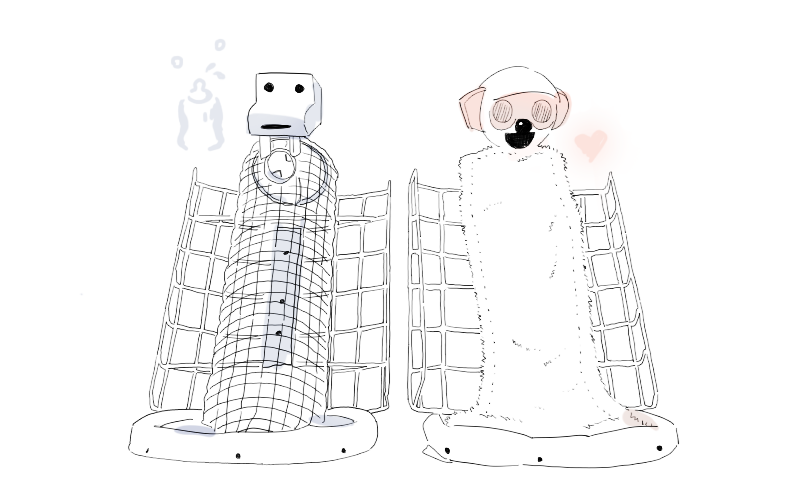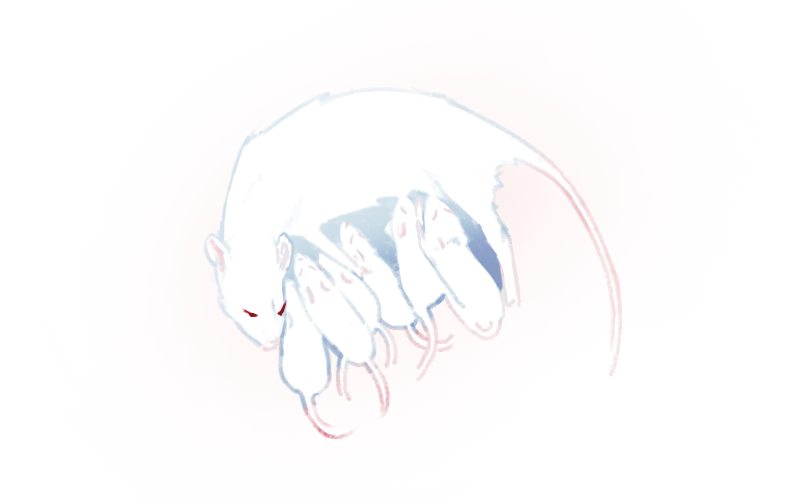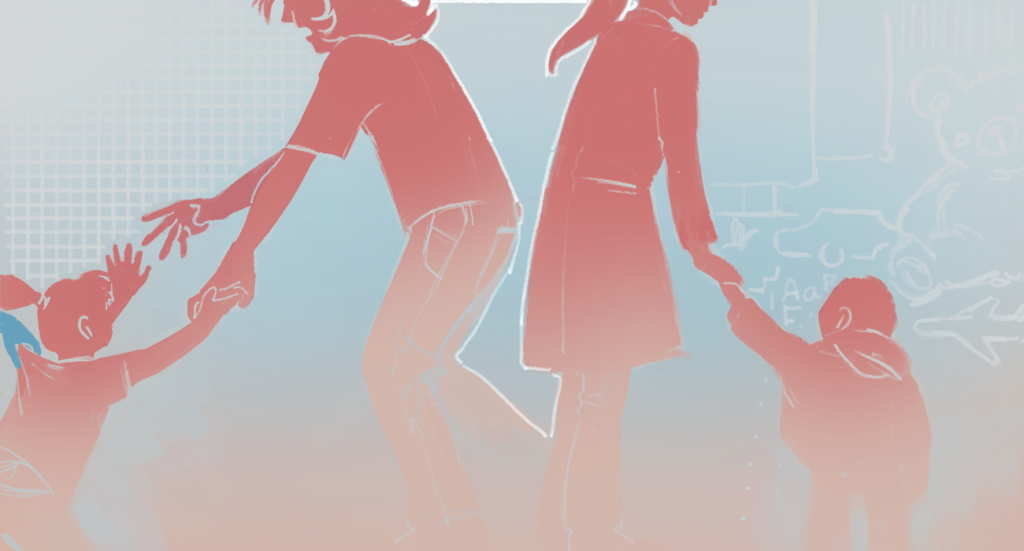The cleanliness of the facility well surpassed my expectations considering the 100-plus children scattered around the various room. The woman with a toothy smile who greeted us tried coaxing my toddler away from me. He responded by clinging to my leg even harder. I decided to stay with him, trying to make him comfortable in his new surroundings. I took stock of the clean linens set aside for nap time, oodles of toys stacked on shelves and the smells of food being warmed for a morning snack assuring myself that he would be well taken care of. I pointed out all these creature comforts with inflated enthusiasm to my son, hoping my excitement would wear off on him or at a minimum, distract him from his anxiety about being somewhere new. The tactic proved a temporary fix as once I mentioned my departure, he grabbed onto me like a life raft in choppy water.
After a couple of hours, the women working there encouraged me to say good-bye as they felt I was just delaying the inevitable teary good-bye. Hesitantly, I kneeled, putting my face right up to his and told him I had to go, but I’d see him later. As the words sunk in, panic took over and he started bawling, as in full body heaving and screaming. Hugging him, I reassured my son that I’d be back soon and that everything would be okay. His little two-year old fingers laced around my neck with a strength I never knew he possessed, refusing to let me stand. “Don’t go, Mommy,” he sobbed, which made my eyes watery. One of the women watching the spectacle, pulled my son away from me and I beelined it to the exit so that my son wouldn’t see my own tears fall. I stood outside the gate, listening to his cries become softer as he was carried further away from me. As I got into my car, knowing I’d see my son in a few short hours after the daycare trial was over, I couldn’t help but feel heartache for the families separated at the border, who don’t have the same guarantees.
In April 2018, Trump’s administration announced a zero-tolerance policy, which meant prosecuting anyone trying to cross into the US illegally. Not long after the policy announcement, within two weeks, 658 children ranging in age from breastfeeding newborns to scared teenagers were turned over to the US Health and Human Services Department while their parents, held in detention centers, awaited prosecution. The conditions of the government run housing facilities were questionable, perhaps inhumane. Not only have inspections of various detention centers shown a lack of basic supplies like soap, toothpaste or adequate food, there is a no touch policy in place which bans workers and the children from hugging, holding, or even consoling other frightened children. And even more extreme measures have occurred as some migrant children have reported being held in isolation for days on end. Trump’s administration vehemently argued that the migrants were being provided the necessities; food and shelter. But were they and was that enough? When I selected a daycare for my child, I hoped that the food, toys and soft blankets would reduce the sting of my short absence, but could they ever replace me?

After the public’s backlash to the announcement, Trump wielded his executive power in June 2018 to halt the separations, but as the NYT reported, hundreds of separations have continued and thousands more have not been reunited with their families. Even more horrifying is that reunification may prove impossible due to poor record-keeping. The motivation behind such an unprecedented policy was to drastically reduce an influx of migrants across the southern border, but instead our administration has created a human version of Harry Harlow’s experiments of maternal deprivation, causing irrecoverable damage to these children.
Nearly 100 years ago in a lab at the University of Wisconsin-Madison, psychologist Harry Harlow set out to understand the effects of parental love and affection on children as well as it’s deprivation. His belief that a baby’s first love, their mother, had a positive and lasting impact on their lives was in stark contrast to prominent figures in the medical and research fields of the early and mid-20th century. Back then, the practice of child-rearing centered around keeping as much distance as possible, a concept this occasional co-sleeping mother can’t fathom.
While we may consider Harvard University Psychology Professor, B.F.Skinner’s notion of raising babies in boxes, which significantly decreased human touch extreme, he reasoned this would prevent babies from growing up to be dependent adolescents. Even the president of the American Psychology Association, John B. Watson, promoted motherless baby farms. The rationale being that babies could be raised in sterile and controlled environments and away from a mother’s love, which he thought of as a disease spreading instrument. In an era when vaccines were not yet part of routine health care, illnesses abound, which only reinforced the notion that human contact was perilous. Instead, feeding was considered the most important aspect of the mother child bond while emotions or affection were viewed as negligible. When I reflect on times when my son shuddered at the thought of a monster hiding in the closet or the exclamations of joy at the sight of a new toy, I can’t comprehend how anyone can disregard the spectrum of emotions humans feel or the power of a simple touch when the act of kissing a boo boo really does make it all better.
While some people like John Bowlby, a British psychologist, disagreed with the mainstream ideas of the time, it was hard to prove until cities across Europe became targets of German bombs during WWII. Just in England, over 700,000 children were sent to stay with friends, relatives or volunteers in the countryside by their parents to keep them out of harm without any idea of when or if the families would be reunited. Despite being provided a friendly home, attention, food, and care, the emotional toll on these children was undeniable. The material items could not make up for their parents’ absence. They became listless and cried for their parents during the day. At night they were tormented by nightmares and wet the bed. Chronic infections normally seen at hospitals took hold of these children which prompted pediatrician Harry Bakwin to institute a policy of allowing mothers of chronically ill children to stay at the hospital with them. The effect was profound and dropped fatal infections from 30-35% to less than 10% in 1938. Despite these findings, Watson’s philosophy which deemphasized the importance of mothering was generally accepted. Harlow, who advocated that a nurturing mother was essential for a child’s development, was out to prove him wrong, empirically, scientifically and methodically using monkeys.

Harlow did this by creating surrogate monkey mothers from wire and wood, some which he covered with cloth. He selected this material after observing baby monkeys clinging to their cloth diaper when raised in nurseries without mothers. He wanted to know whether food (bottle) or comfort (cloth) was a stronger driver of attachment, so he designed a study in which a baby monkey was exposed to one wire surrogate and one cloth surrogate mother and alternated which surrogate held the bottle. Independent of the bottle’s position, babies would overwhelmingly cling to the cloth surrogate mother. Other iterations of the study involved blunt spikes poking out of the cloth mother, which unexpectedly did not discourage the baby from holding onto its surrogate mother, proving the importance of contact comfort and reminding me how important each hug or cuddle is to my son. Whether he’s scared or excited, I can feel a moment of calmness wash over him as he sinks into my embrace. I can’t imagine a world void of affection, but Harlow not only could, but went on to study it.
Harlow furthered his understanding of love, touch, and affection by observing what happens when young monkeys are deprived of such things. His studies on social deprivation involved isolation of infant and juvenile monkeys for various periods of time. The parameters of partial isolation involved keeping the monkeys in wire cages where they can see, smell, and hear other monkeys though can’t touch them, an eerily familiar situation to the conditions at the detention centers. Complete isolation is analogous to solitary confinement where the monkey would be left alone in what Harlow dubbed the Pit of Despair, an inverted pyramid like structure where the monkey could only see the light above. The monkeys emerged severely psychologically disturbed, entered a state of depression and showed autistic behaviors like rocking and clutching. Some refused to eat and days later died of emotional anorexia. Even more disturbing were the attempts to reintegrate the animals into society failed for monkeys isolated for their first 6 months of life, showing defects in nearly every aspect of social behavior.
Despite such ground-breaking findings, Harlow’s work received backlash and may have even been a catalyst to the ongoing animal rights movement in the US. Interestingly, William Mason, Harlow’s former student said of his work, “that anybody with respect for life or people would find this offensive.” Nonetheless, within the context of new regulations for the use of animals in research, Schanberg and Field have continued to study the effect of touch on development. Using rodent models, they have shown that even a brief separation of mother from pup from physical interaction leads to an increase in stress hormones and reduction in growth hormones across all organs like heart, brain, and liver to name a few. While I appreciate findings from controlled lab-based studies, I don’t need them to confirm that my son’s or any child’s stress levels rise when left alone in unfamiliar surroundings. I can see it and I feel it.
When I came to pick up my son in the afternoon, he didn’t see me enter the room, so I waited a minute before calling out his name hoping to catch a smile or laugh. Instead, he sat alone, watching all the other kids giggle and play with each other. His Paw Patrol sneakers lit up each time they hit the leg of the chair his legs dangled off. He was still wearing his blue puffy jacket I left him in despite summer approaching. Apparently, he refused to take it off, clinging onto the one familiar item from home. When I caught his attention, he ran to me, tripping over his own feet. We bear-hugged and I saw that his eyelashes remained wet with the tears that had not yet dried on his cheeks. He insisted I carry him, 30 pounds of cuddles. Seeing my son react so strongly to his new surroundings made me question whether transferring him to a new daycare was the right choice. Did the benefits outweigh his response? I believed time would provide me with an answer.

As a scientist who works with research animals, I am cognizant of the strict rules in place to protect animals. The IACUC, Institutional Animal Care and Use Committee, is required by federal law to be formed at any institution that conducts research on animals. It states that social creatures, like rats and mice, are to be housed in groups rather than in isolation for their psychological wellbeing. There are exemptions such as when the animal is demonstrating aggressive behavior or recovering from an operation, but when this occurs, the social deprivation must be supplemented with enrichment toys, human interaction or increased play space. Eventual reintroduction to other cage mates is ideal but may have to occur gradually for optimal social adaptation. There are also strict rules about the age at which a mother can be separated from her baby pups in order to protect their mental and physical state, an undisputable finding that has roots in Harlow’s work. So if researchers must abide by regulations to protect the physical and emotional integrity of rodents, why are we not upholding the same standards for children held in government facilities?
It’s been a month since that trial at the new daycare and our morning good-byes are much easier. My son gives one of his favorite teachers a morning hug after he bearhugs me and excitedly sits down for breakfast next to his newfound friends. In the evenings he runs towards me with happiness, not desperation and fills my ears with stories of the day. We both know the short time apart is finite and filled not only with hot meals and soft blankets, but teachers who aren’t afraid to comfort, to touch, to show affection. It is a combination of the tangible and intangible support that has made all the difference and put a smile on my son’s face. Unfortunately, and unfairly, for the children being held in detention centers, the conditions are in stark contrast. At the border, a human version of Harry Harlow’s experiments of maternal deprivation is ongoing. The effects of love, affection, and touch deprivation have only been compounded by the lack of basic sanitization, food, bedding and medical care. We are knowingly recreating a more devastating situation in humans that so many people considered unethical or inhumane in monkeys nearly a century ago. Trump’s administration is causing intentional and lasting damage to these children, their parents and the reputation of our country. It is our job as fellow humans to reduce, not add to the suffering of families who are fleeing from already treacherous situations. The research tells us the separation of a child from their primary caregiver is damaging physically, psychologically, developmentally, molecularly and so should our conscience. Let us not forget them, our history or science. Every child deserves to be with their loving family and we should never allow them to be deprived of that.•




